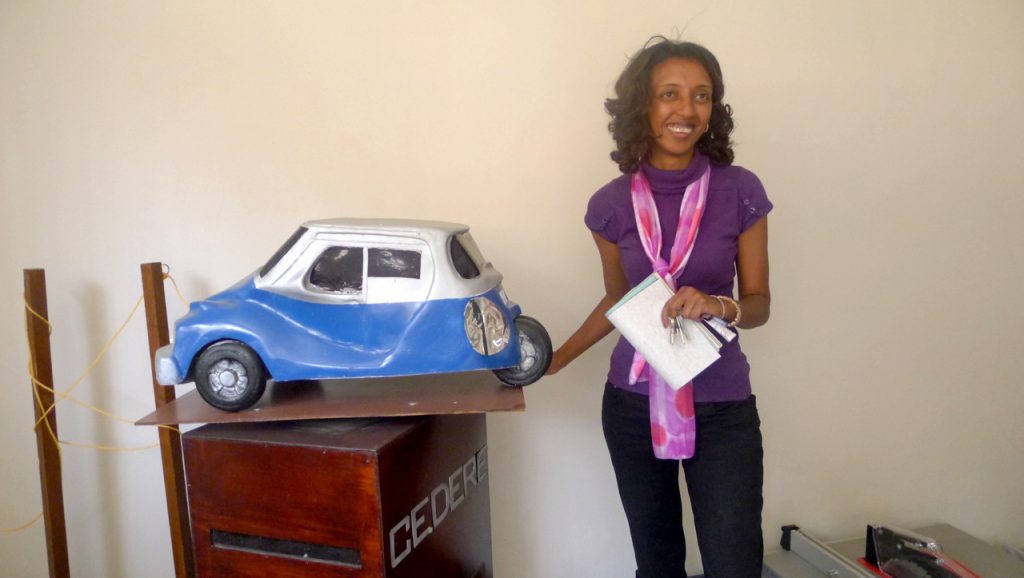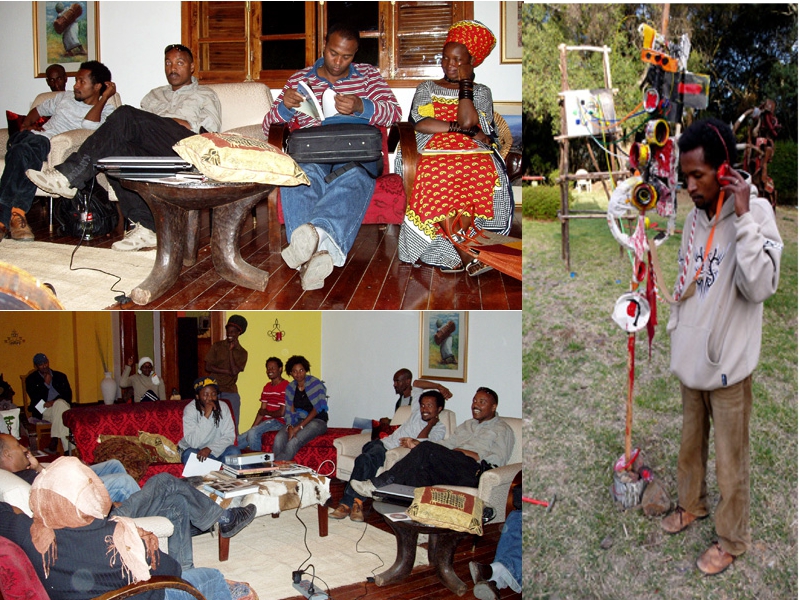Visible in Ethiopia. A presentation at the Addis Ababa University
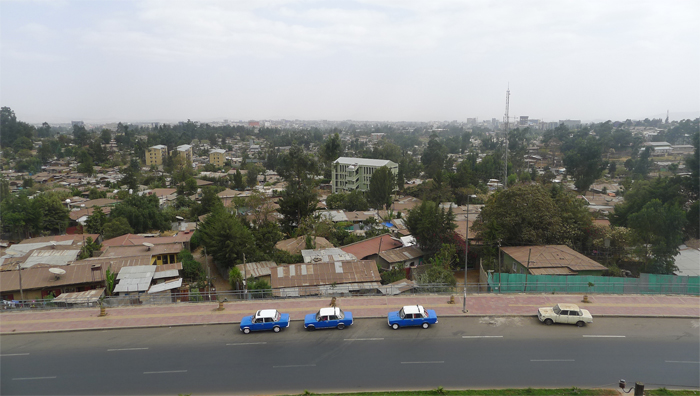

Over the last few weeks Judith Wielander, co-curator of visible, was invited to Addis Ababa, Ethiopia, by The Skunder Boghossian College of Performing and Visual Arts of the Addis Ababa University – which comprises of the School of Music, the School of Theater Arts and the School of Fine Arts and Design, to present the visible project. Established in 1957, the School of Fine Arts and Design, until the socialist revolution of 1974, was one of the leading institutes of African Modernism, along with the University of Khartoum in Sudan and the Makerere University in Uganda. The School has produced many internationally acclaimed Ethiopian artists, like Skunder Boghossian who had played an important role in the anti colonial and independence struggles of the African Continent through the visual arts.
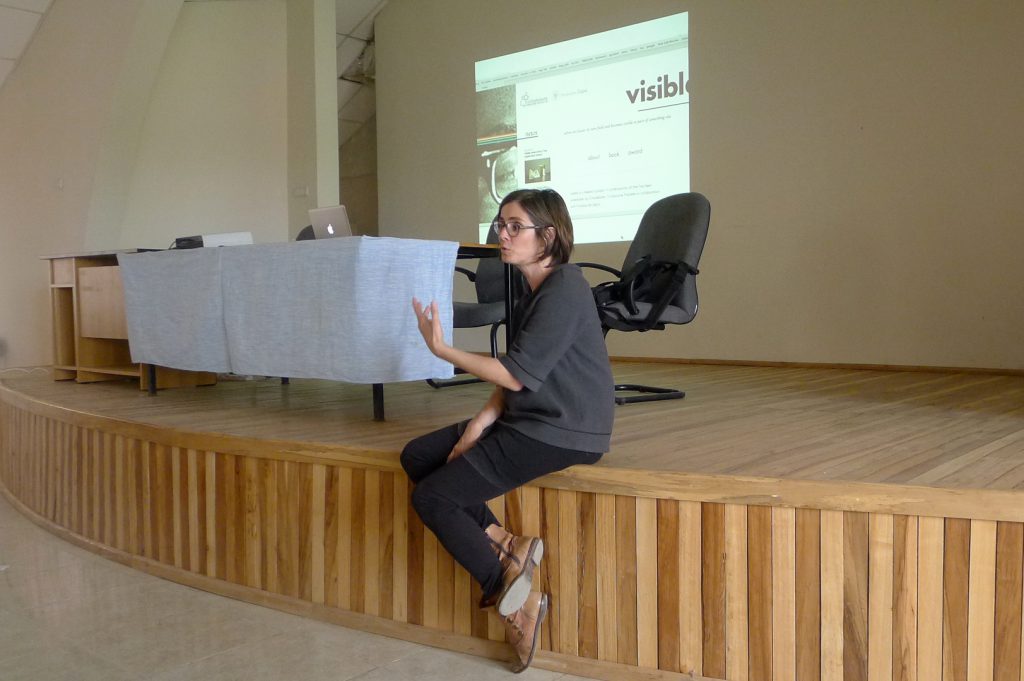 Let me share some notes about the contemporary Addis Ababa. It’s the capital of modern Ethiopia, and the heart of the African Union, hence scene of many international conferences. The city accommodates several international institutions including hundreds of Non Governmental Organizations working in the area of social development. The city therefore represents the various cultures of Africa and serves as a bridge between the continent, the Arab world and the West. During the 1950s and 1960s Addis Ababa was politically significant for African activism and had attained great notoriety as a distinct hallmark of Pan-Africanism. The movement of African decolonization had its locus in Addis Ababa, the home for the Organization of African Unity. Addis today, a rapidly changing city with the fastest growing economy in Africa, represents a vibrant hub of contemporary cultural intersection.
Let me share some notes about the contemporary Addis Ababa. It’s the capital of modern Ethiopia, and the heart of the African Union, hence scene of many international conferences. The city accommodates several international institutions including hundreds of Non Governmental Organizations working in the area of social development. The city therefore represents the various cultures of Africa and serves as a bridge between the continent, the Arab world and the West. During the 1950s and 1960s Addis Ababa was politically significant for African activism and had attained great notoriety as a distinct hallmark of Pan-Africanism. The movement of African decolonization had its locus in Addis Ababa, the home for the Organization of African Unity. Addis today, a rapidly changing city with the fastest growing economy in Africa, represents a vibrant hub of contemporary cultural intersection. Besides the project presentation in the first week of April, followed by many students and cultural producers, Judith Wielander had the occasion to exchange and discuss with many cultural organisations as well as artists and collectives that are giving an important contribution to the growing of a vibrant local contemporary art scene, hence positioning Addis in the map of contemporary artistic research. Here following, is a brief outline on two of the most prominent art organizations that engage their practice in the social sphere.
Besides the project presentation in the first week of April, followed by many students and cultural producers, Judith Wielander had the occasion to exchange and discuss with many cultural organisations as well as artists and collectives that are giving an important contribution to the growing of a vibrant local contemporary art scene, hence positioning Addis in the map of contemporary artistic research. Here following, is a brief outline on two of the most prominent art organizations that engage their practice in the social sphere.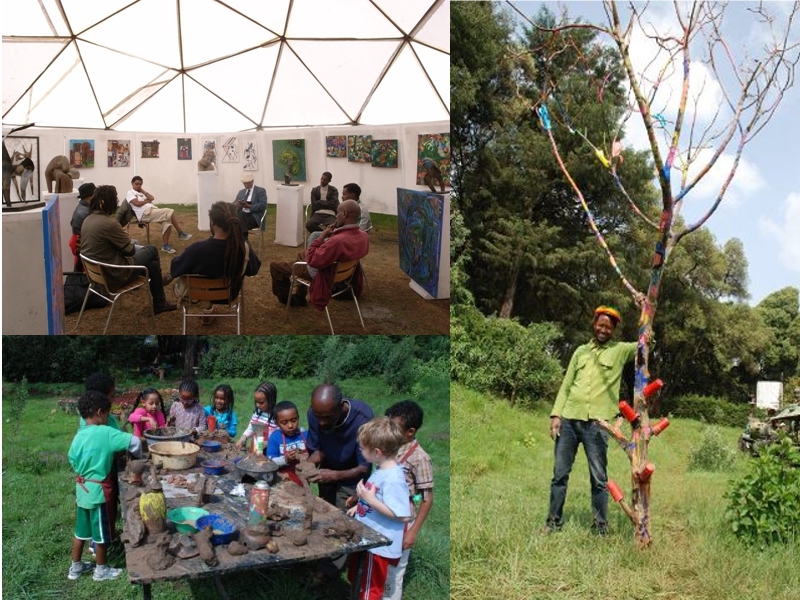 Netsa Art Village, located in the scenic Ferensay Park, is an artist run and community based platform, established in 2008 by 11 graduates from the Addis Ababa University School of Fine Arts and Design: Henok Getachew, Miheret Kebede. Mulugeta Kassa, Dawit Adenew, Daniel Alemayehu, Demessie Gurumu, Sisay Wolde Geiorgis, Tamerat Gezahegn, Solomon Tsegaye, Tesfahun Kibru, Gossa Gebre Sillasie, Robel Temesgen, Hirut Gizaw, Helen Zeru, Leyikun Nahusenay, Frezer Ademasu, Akilu Temesgen, Maedot Getahun, Salima Punjani.
Netsa Art Village, located in the scenic Ferensay Park, is an artist run and community based platform, established in 2008 by 11 graduates from the Addis Ababa University School of Fine Arts and Design: Henok Getachew, Miheret Kebede. Mulugeta Kassa, Dawit Adenew, Daniel Alemayehu, Demessie Gurumu, Sisay Wolde Geiorgis, Tamerat Gezahegn, Solomon Tsegaye, Tesfahun Kibru, Gossa Gebre Sillasie, Robel Temesgen, Hirut Gizaw, Helen Zeru, Leyikun Nahusenay, Frezer Ademasu, Akilu Temesgen, Maedot Getahun, Salima Punjani.Since 2009 Nesta regularly organises a one-month Art Festival at Netsa Art Village that includes exhibitions, concerts, debates and poetry evenings in collaboration with different organisations and cultural institutions in Addis. Further more the artists are organizing, over the whole year, workshops with public schools in the neighborhood in order to implement their educational program with creative practices.
The Townhouse Gallery, Kuona Trust Triangle Arts, and the Insaka Art Trust Zambia were Netsa recent partners in the organization of several capacity building workshops contributing to the reinforcement of this singular artist run Ethiopian initiative.
During my stay, two young Ethiopian artsist, Aida Muluneh and Mulugeta Kassa, presented their recent art works. Asni Gallery hosts, for short periods, international artists through a residency program and engages in educational and community based art projects that address and involve the nearby neighborhoods.
Following the positive feedback that the visible project got at the Addis Ababa University, there will be a further involvement of Judith Wielander in the ongoing Master in Theatre and Development, in order to establish a more regular exchange between visible and the College of Performing and Visual Arts.
We’re also happy to announce that later this May visible will also be presented in South Africa, with an event at the Center for Historical Reenactments of Johannesburg, organized by the co-curator of visible, Matteo Lucchetti, in collaboration with Gabi Ncobo, curatorial advisor for the 2012 visible award and director of the Center.
